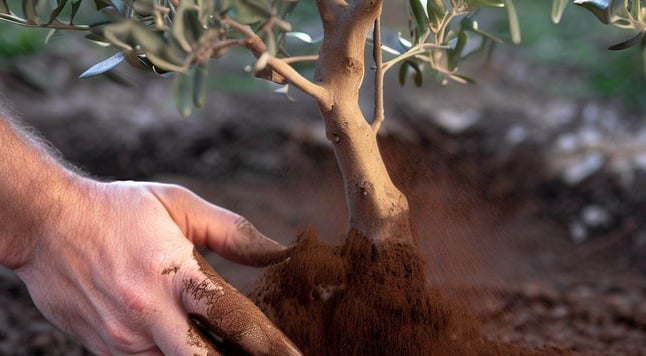Exploring Humikon Leonardite: The Organic Miracle for Agriculture



What is Humikon Leonardite?
Leonardite is a unique and naturally occurring organic substance, primarily known for its high content of humic and fulvic acids. These acids are derivatives of decayed plant material and constitute essential components of soil health and fertility. Leonardite is formed over millions of years through the process of lignification, whereby organic matter is subjected to heat and pressure in what are known as lignite deposits. It is characterized by its dark color and rich composition, which makes it distinct from other organic amendments.
This substance is primarily found in lignite mines, which are located in various regions around the world. The extraction of leonardite occurs from shallow deposits where it can be easily accessed. Unlike lignite, which is often mined for use as a fuel source due to its carbon content, leonardite is not utilized in this manner. Instead, it serves as a critical resource for agricultural practices, particularly in enhancing soil structure, promoting nutrient availability, and improving water retention.
One of the reasons leonardite is not considered a viable energy source is its decomposition level. While conventional lignite retains more of its carbon content and energy potential, leonardite is enriched with beneficial organic compounds that facilitate plant growth. This organic matter plays a significant role in the formation of high-quality fertilizers and soil conditioners, thus making it increasingly popular among farmers and agronomists. The application of leonardite in agriculture provides numerous benefits, including improved soil acidity levels and increased microbial activity, which are vital for sustainable farming practices.
In summary, leonardite is an organic miracle for agriculture, distinguished by its rich composition of humic and fulvic acids and its pivotal role in enhancing soil quality rather than serving as an energy source.
The Composition of Leonardite
Leonardite is a highly humified organic material that is derived from the decomposition of plant matter, primarily found in lignite coal deposits. The chemical composition of leonardite is distinguished by its high concentrations of humic acids and fulvic acids, which are vital components that contribute significantly to its effectiveness in agriculture. Humic acids typically represent 60-70% of the total organic matter in leonardite, while fulvic acids account for approximately 30-40%.
Humic acids are large, complex organic molecules that enhance soil structure by promoting aggregation and increasing moisture retention. They can improve nutrient uptake by plants as they bind to nutrients, making them more accessible. Additionally, humic acids play a crucial role in stimulating microbial activity in the soil, fostering a healthy ecosystem for beneficial microorganisms that are essential for nutrient cycling and plant growth.
On the other hand, fulvic acids are smaller and more soluble, providing even greater mobility in the soil. This allows fulvic acids to assist in transporting minerals and nutrients across cell membranes in plants. Their chelating properties help to make trace minerals more bioavailable, which can lead to improved plant health and productivity.
The unique combination of these organic acids in leonardite not only improves soil fertility but also enhances the cation exchange capacity (CEC), leading to better retention of nutrients. In essence, the composition of leonardite positions it as an organic miracle for agriculture, effectively contributing to soil health and overall plant growth. By integrating leonardite into agricultural practices, farmers can harness these benefits to promote sustainable farming and ensure higher yields.
How Humikon Leonardite Benefits Soil Health
Leonardite, a natural organic material derived from the decomposition of plant matter over millennia, is increasingly recognized for its numerous benefits to soil health. Its high humic acid content plays a pivotal role in enhancing soil structure, promoting better drainage, aeration, and nutrient retention. When incorporated into agricultural soils, leonardite acts as a conditioner that revitalizes soil, enabling it to function more effectively in supporting plant growth.
One of the primary mechanisms through which leonardite improves soil health is by increasing the soil's organic matter content. Organic matter is essential for maintaining soil fertility, enhancing its capacity to retain moisture, and providing a rich habitat for beneficial microorganisms. When leonardite is added to the soil, it not only enhances organic matter levels but also promotes the formation of stable aggregates. This aggregation leads to improved soil structure, resulting in enhanced aeration; consequently, roots can access the necessary air and nutrients more efficiently.
Moreover, the presence of leonardite contributes to increased drainage capabilities in heavy clay soils. As the soil structure improves, water infiltration rates increase, reducing the risk of waterlogging and promoting a healthier root environment. Healthy drainage is crucial to prevent plant stress, especially during periods of excessive rainfall. Additionally, the humic substances in leonardite assist in the chelation of nutrients, making essential minerals available to plants. This characteristic significantly enhances nutrient retention, reducing the need for additional fertilizers, and leading to more sustainable farming practices.
In summary, leonardite serves as a valuable organic amendment that fortifies soil health by boosting organic matter, optimizing soil structure, and enhancing essential processes such as drainage and nutrient retention. Adopting leonardite as a soil conditioner can empower farmers to cultivate healthier, more productive crops while promoting ecologically sound agricultural practices.
Water and Nutrient Retention
Leonardite, a natural organic material derived from the decomposition of plant matter, exhibits remarkable properties that greatly enhance water and nutrient retention in the soil. This characteristic plays a crucial role in sustainable agriculture by optimizing the use of water resources and minimizing the necessity for chemical fertilizers. When incorporated into the soil, leonardite helps to improve soil structure, allowing for increased porosity and aeration, which facilitates water infiltration and retention.
The hydrating capabilities of leonardite arise from its high cation exchange capacity (CEC), which allows it to hold onto essential nutrients such as potassium, calcium, and magnesium. This ability to retain nutrients prevents them from leaching away during heavy rainfall or irrigation. As a result, farms utilizing leonardite can experience enhanced soil fertility over time, leading to healthier crops and improved yields. Furthermore, this phenomenon contributes to reducing the environmental impact associated with fertilizer runoff, which can pollute local waterways and disrupt aquatic ecosystems.
Additionally, the moisture-retentive properties of leonardite can help combat soil erosion, a significant concern in agricultural practices. By enhancing soil cohesion, leonardite helps to stabilize the soil structure, reducing the likelihood of erosion caused by water or wind. This stabilization is particularly beneficial in areas prone to extreme weather conditions or with sloped terrains, as it can significantly mitigate the loss of topsoil and nutrient-rich layers.
In essence, the use of leonardite in agriculture not only improves water and nutrient retention but also promotes overall soil health. By embracing leonardite as an organic additive, farmers can adopt more sustainable practices, ultimately leading to a responsible and eco-friendly approach to food production.
Stimulating Root Growth and Plant Health
Leonardite, a natural source of humic acids, plays a crucial role in enhancing root development and overall plant health. Numerous scientific studies have demonstrated that its application significantly influences root architecture, promoting the establishment of a robust root system. Enhanced root development is vital, as it not only supports the plant's structural integrity but also facilitates improved nutrient and water uptake from the soil.
A study conducted by researchers at the University of Agriculture investigated the effects of leonardite on various crops. The findings indicated that plants treated with leonardite exhibited a notable increase in root biomass compared to untreated control groups. This increase can be attributed to the presence of humic substances, which stimulate root cell division and elongation. Furthermore, the study highlighted that plants receiving leonardite showed enhanced lateral root growth, which effectively expands the plant's ability to access nutrients.
The relationship between root health and plant vitality cannot be overstated. Healthy roots serve as the foundation for nutrient acquisition and overall plant resilience against environmental stressors. In trials involving crops such as corn and soybeans, the application of leonardite was shown to improve nutrient uptake efficiency significantly. This enhanced nutrient assimilation is particularly crucial during key growth stages, ultimately leading to better crop yields and quality.
Another compelling observation is the correlation between root health and the plant's ability to withstand drought conditions. Plants with established root systems are more capable of accessing deeper moisture levels, which mitigates stress during periods of insufficient rainfall. As such, incorporating leonardite into agricultural practices not only promotes root health but also contributes to sustainable farming by improving crop resilience against climatic challenges.
Applications of Humikon Leonardite in Agriculture
Leonardite, a naturally occurring humic substance derived from lignite coal, has gained recognition in agriculture for its numerous benefits in enhancing soil health and crop productivity. Its applications span various areas, including soil management, nutrient enhancement, and improving plant resilience. Incorporating leonardite into agricultural practices is essential for farmers looking to improve soil structure and fertility.
One of the most significant applications of leonardite in agriculture is as a soil amendment. When mixed with soil, leonardite enhances its organic matter content, which improves soil aeration, water retention, and nutrient-holding capacity. This results in healthier root systems and promotes beneficial microbial activity. Farmers can incorporate leonardite directly into the soil either through broadcasting or by mixing it with compost or other organic materials to create nutrient-rich blends.
The proper dosage of leonardite can vary depending on soil type, crop type, and specific agricultural goals. Typically, a recommendation varies from 1 to 5 tons per hectare, with considerations made for existing soil conditions and the needs of specific crops. It is advisable to conduct soil tests to determine nutrient deficiencies and evaluate whether the application of leonardite is beneficial for particular situations.
Another beneficial application of leonardite is its use in liquid fertilizer formulations. By extracting humic acids from leonardite, farmers can apply these micronutrients as foliar sprays or incorporate them into irrigation systems. This method ensures that plants can quickly absorb essential nutrients, ultimately leading to improved crop growth and yield. Additionally, leonardite enhances the overall effectiveness of fertilizers, reducing the need for excessive chemical inputs and promoting environmentally sustainable agricultural practices.
In conclusion, the applications of leonardite in agriculture extend beyond mere soil improvement. With proper incorporation methods and adherence to recommended dosages, farmers can unlock the full potential of their soils and enhance crop productivity while fostering sustainable agriculture.
Conclusion: The Future of Leonardite in Farming
As an organic material derived from the weathering of lignite, leonardite offers a multitude of benefits that make it a valuable asset in the field of sustainable agriculture. Its unique composition enhances soil structure, increases nutrient availability, and supports microbial activity, leading to improved crop yield and quality. Farmers who integrate leonardite into their agricultural practices can expect healthier soils and more resilient plants, which are essential for tackling the growing challenges of food production.
The future of leonardite in farming is promising, particularly as the agricultural sector increasingly embraces sustainability. Ongoing research and development are crucial for unlocking its full potential. By studying the varied applications of leonardite, scientists and agronomists can devise innovative strategies that maximize its efficacy while minimizing environmental impact. The incorporation of leonardite into organic farming practices not only contributes to soil health but also aligns with broader environmental goals such as reducing chemical fertilizer usage and improving carbon sequestration in soils.
Furthermore, with the rising global population and the accompanying pressure on food production systems, leonardite presents a compelling case as a natural solution that could enhance food security. Its ability to improve both the quality and quantity of food produced means it holds great promise as part of a holistic approach to agricultural sustainability. As more farmers explore the potential of leonardite and as research continues to unveil its benefits, we can anticipate a significant transformation in modern farming practices. In summary, leveraging leonardite effectively may lead to greener agricultural systems that not only meet immediate food demands but also promote long-term ecological health.
